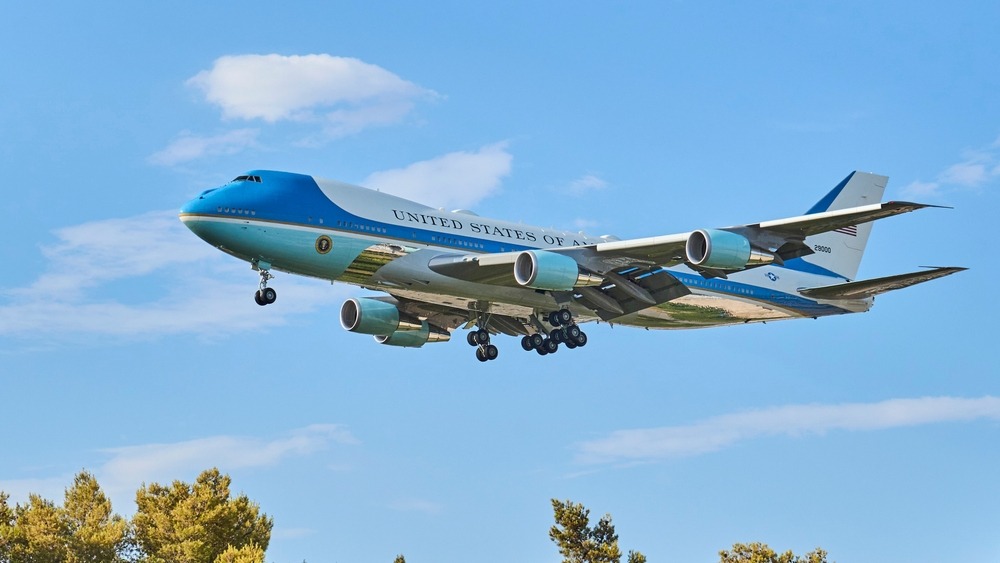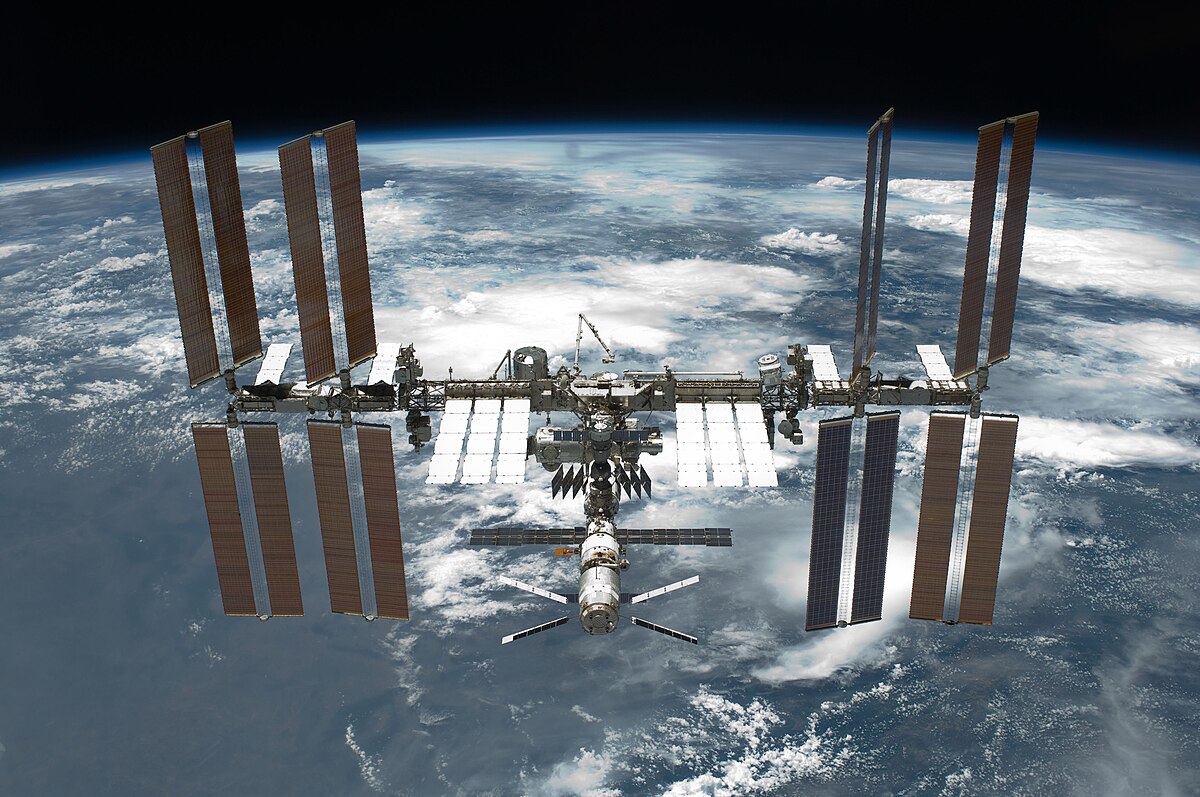Humanity pushes boundaries with every grand build, from towering telescopes that pierce the stars to warships that command the seas. These creations demand fortunes that dwarf personal fortunes and rival national budgets. Yet in late 2025, as SpaceX's Starship achieves another milestone launch and global tensions spike defense outlays, the sheer scale of these investments feels more urgent than ever. They spotlight our drive for discovery, dominance and display in an era where every dollar counts toward tomorrow's headlines.
This ranking uncovers the world's priciest human-made marvels, starting with opulent indulgences and climbing to cosmic collaborations. Costs reflect total development, construction and key upgrades, drawn from verified public records and expert audits. Each entry reveals not just expense but the raw ambition fueling our species.

Air Force One, with its advanced security systems and flying command-center capabilities, lands just outside the top 10—an extraordinary multi-billion-dollar symbol of American power.
Ranking the Extravagance: From Flying Palaces to Orbital Outposts
14 - Airbus A380 “Flying Palace” — $600 Million
A Saudi prince transformed this jumbo jet into an airborne retreat complete with bedrooms, a spa and a prayer room featuring a rotating floor. Custom fittings pushed the price sky-high, turning routine flights into lavish escapes. It stands as the pinnacle of private aviation excess, where comfort meets engineering wizardry.
13 - Mars Perseverance Rover — $2.7 Billion
NASA's tireless explorer touched down on the Red Planet in 2021, gathering rock samples that hint at ancient life. Its suite of cameras, drills and lasers cost a fortune, yet the rover's daily dispatches from Mars fuel dreams of human footsteps there soon. Every byte of data returned justifies the investment in our stellar neighborhood.
12 - Air Force One — $4 Billion
This Boeing 747 serves as the ultimate mobile command center, equipped with anti-missile defenses, operating rooms and encrypted networks. Upgrades in recent years have fortified it against cyber threats, ensuring the president flies in unassailable style. It's more than transport; it's a symbol of safeguarded leadership amid global uncertainties.
11 - Northrop B-2 Spirit Stealth Bomber — $4.2 Billion
Each of these bat-winged ghosts slips through enemy skies undetected, blending radar-evading materials with precision munitions. Development stretched decades, inflating costs with cutting-edge avionics. The B-2 proves stealth technology commands premiums as steep as its flight paths.
10 - Antilia — $4.6 Billion
Mukesh Ambani's 27-story Mumbai residence boasts three helipads, a private theater and snow rooms amid tropical heat. Designed as a self-contained city for 600 staff and family, it towers over India's skyline. This vertical fortress declares architectural supremacy through unchecked resources.
9 - History Supreme Yacht — $4.8 Billion
Adorned with 10,000 kilograms of gold and platinum plus T-Rex bone accents, this 100-foot vessel floats like a billionaire's fever dream. Built in secrecy, its opulence drew whispers of over-the-top decadence. The yacht embodies how the ultra-wealthy turn leisure into liquid assets that sparkle on the waves.

The USS Zumwalt, one of the most advanced and expensive warships ever created, takes the No. 8 spot with its groundbreaking stealth technology and multibillion-dollar price tag.
8 - USS Zumwalt Stealth Destroyer — $8 Billion
This sleek naval predator wields lasers and hypersonic missiles, its angular hull defying detection. Only three entered service due to ballooning expenses from unproven innovations. Each ship rivals the price of a small city's infrastructure, highlighting the gamble in revolutionary warfare tools.
7 - Large Hadron Collider — $9 Billion
Buried under the Alps, this particle accelerator smashes protons to unveil nature's secrets, including the Higgs boson in 2012. Thousands of scientists from over 100 countries collaborated on its 27-kilometer ring. The collider's price underscores the collective bet on unlocking the universe's code.
6 - Columbia-Class Submarine — $9.15 Billion Per Vessel
These underwater behemoths prowl silently for months, armed with Trident missiles that deter global threats. Twelve planned hulls will replace aging fleets, with costs driven by stealth coatings and nuclear reactors. They represent the underwater backbone of deterrence, vanishing into depths worth fortunes.
5 - James Webb Space Telescope — $9.7 Billion
Unveiled in 2021, Webb's infrared gaze peers 13.5 billion years back, capturing infant galaxies in stunning detail. Gold-coated mirrors and cryogenic systems demanded precision beyond earthly norms. Its images not only awe but redefine our place in the cosmos, one photon at a time.
4 - SpaceX Starlink Constellation — $10 Billion
Elon Musk's web of 6,000-plus satellites beams internet to remote corners, revolutionizing global connectivity. Recent 2025 expansions have surged launch rates, escalating costs amid regulatory hurdles. Starlink's growth promises to bridge digital divides, turning orbital real estate into everyday utility.
3 - Gerald R. Ford Aircraft Carrier — $13 Billion
The U.S. Navy's flagship bristles with electromagnetic catapults and drone bays, housing 75 aircraft in a 100,000-ton hull. Delays from tech integrations hiked the bill, but it projects power across oceans. This floating airfield embodies naval supremacy in an age of contested seas.
2 - Hubble Space Telescope — $16 Billion
Launched in 1990, Hubble's repairs via five shuttle missions fixed its blurry start and extended its life. It has snapped over 1.5 million images, expanding our cosmic knowledge exponentially. The telescope's enduring gaze reminds us that perseverance in space yields views worth every repair dollar.
1 - International Space Station — $150 Billion
Orbiting at 17,500 miles per hour, the ISS unites five space agencies in a habitable lab 250 miles up. Costs span modules, 40-plus assembly flights and continuous resupplies since 1998. According to analysis reviewed by Finance Monthly, it hosts experiments that advance medicine and materials back on Earth. This orbiting outpost crowns human ingenuity, a fragile beacon proving cooperation conquers the void.

The International Space Station gliding above Earth’s horizon — a constant reminder of human collaboration and exploration beyond our planet.
The True Cost-Benefit: Unlocking Economic Gold from Cosmic Investments
These mega-projects stir awe, but their real power lies in the wealth they generate far beyond launchpads and shipyards. Consider the economic multiplier effect, a simple idea where each government dollar spent ripples outward, creating jobs, innovations and growth that multiply the initial outlay. NASA's annual budget of about $25 billion, for instance, sparks $75.6 billion in total economic output each year, according to the agency's 2023 impact report. That's a return of roughly three dollars for every one invested, through contracts that employ engineers in Ohio factories or spur tech startups in California garages.
Harvard business professor Matthew C. Weinzierl captures the heart of this in his analysis of space's untapped potential. He argues that ramping up public investments to historical peaks could inject $1.5 trillion to $3 trillion into the economy over two decades, not just by direct spending but by igniting private ventures like reusable rockets. Imagine a small-town welder whose skills, honed on ISS components, lead to breakthroughs in earthquake-resistant bridges.
Or a software glitch fixed in orbit that evolves into safer self-driving cars. These aren't hypotheticals; they're the quiet engines driving progress. In 2025, with Starship's reusable tech slashing launch costs by 90 percent from Apollo days, the multiplier feels even more electric. It turns staggering bills into seeds for prosperity, reminding us that bold bets on the stars often yield the richest earthly rewards. We feel that pull—the thrill of funding the future, knowing our taxes or philanthropy might one day echo in everyday miracles.
Why These Price Tags Echo Through Our Wallets and Ambitions
Stacking $600 million flying retreats against $150 billion space labs exposes our core tensions. Science demands billions to unravel existence's mysteries, birthing tools like GPS from satellite spin-offs. War machines guard fragile peace, their hulls forged in foundries that sustain communities. Luxury flaunts personal triumphs, yet even yachts like History Supreme trickle innovation into marine design. Together, they mirror our yearnings: to know more, stay safe, shine brighter. The ISS, humming above us now, whispers that unity amplifies every cent, crafting legacies that outlast the ledgers.

The James Webb Space Telescope capturing the deepest, sharpest views of the universe ever recorded, powered by its iconic gold-plated mirrors.
Curious Minds Wonder: Answering Your Burning Questions
Is the International Space Station truly the priciest human creation, and what makes its cost so immense?
Absolutely, the ISS holds the record at $150 billion, a figure amassed over decades by five space agencies pooling resources for modules, launches and life-support systems. Unlike a single yacht or bomber, its price includes 42 assembly missions and ongoing operations that keep six astronauts alive in vacuum. This collaborative behemoth not only tests zero-gravity medicine but has spun off 3,000 patents, from better water filters to advanced robotics. In 2025, as deorbit plans loom for 2030, its legacy feels bittersweet—a testament to what shared vision achieves when nations align beyond borders.
How do billionaire luxuries stack up against government-backed mega-projects in raw expense?
Billionaire buys like Antilia at $4.6 billion or the History Supreme yacht at $4.8 billion pale next to public endeavors such as the $16 billion Hubble or $150 billion ISS, which demand institutional scale and global buy-in. Private excesses thrill with personalization, like gold-plated decks, but lack the iterative R&D that balloons official costs through trials and upgrades. Still, both highlight wealth's elasticity; a prince's jet spa costs less than one B-2 bomber wing, yet both symbolize unchecked pursuit. The gap underscores how collective goals amplify ambition into astronomical figures.
What unexpected benefits have flowed from these ultra-expensive scientific instruments?
Instruments like the James Webb Telescope, priced at $9.7 billion, deliver far more than pretty pictures—they've confirmed exoplanets potentially habitable and refined dark matter theories, influencing climate models on Earth. The Large Hadron Collider's $9 billion hunt for particles birthed the World Wide Web's foundations and advanced cancer treatments via proton therapy. These payoffs, often 7-to-1 in economic returns per studies, weave into daily life through stronger fabrics, faster computers and healthier diagnostics. It's the quiet drama: fortunes flung at the unknown boomerang as tools that enrich us all.













